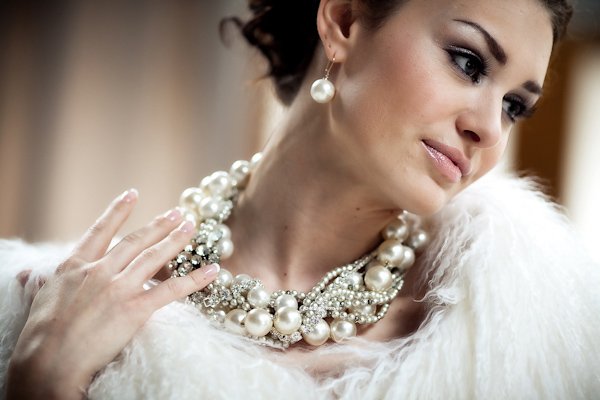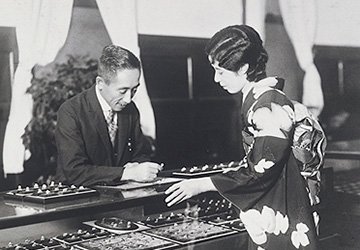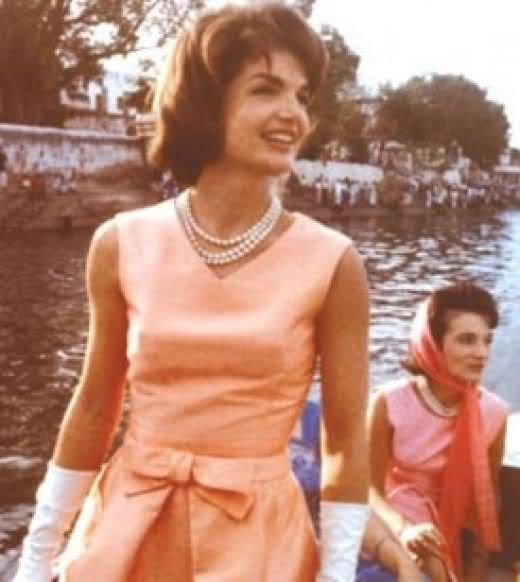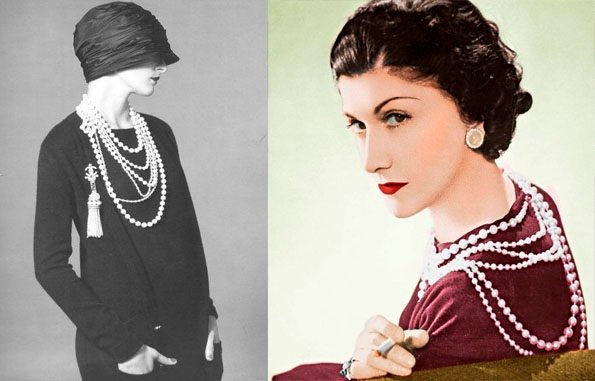For centuries, pearls have been associated with kings, emperors, something inaccessible and exclusive - because every pearl was unique and never repeated. But at the end of the XIX century the situation changed, and pearls became the most popular and easily accessible adornment in the world. It was worn by wealthy people and by working class representatives, and this was made possible by the pearl king Kokiti Mikimoto, who made one of the most amazing discoveries in history: he learned to grow pearls.

Noodle merchant, who created the perfect pearl
Kokiti Mikimoto could become the ideal hero of the baiopik with the plot "who was nothing, that will become everything". A native of a working family who lost his father early and was forced to trade noodles in poor Japanese villages, he showed an interest in pearls at a young age, which only professional divers could extract before the scientific discovery of Mikimoto.

For centuries pearls were one of the most inaccessible, desired and expensive jewelry, any bead extracted from the seabed became a treasure, and very small pearls were poured into powder and added to food as a medicine. Mikimoto wanted to uncover the mystery of the origin of pearls and learn how to grow it, and he was obsessed with the dream of creating a string of pearls for two dollars, so that any woman in the world could afford it. Mikimoto conducted many experiments, suffered dozens of failures, the water turned out to be infected with poisonous algae, oysters perished, he was considered crazy, but in the end he reached his: in 1893 he managed to grow pearls. A couple of decades left to create an ideal, large and round pearl.
The world against Japanese pearls
By the 1920s, the pearl harvest has increased so much that Mikimoto came to the international market. His cultured, perfect in every sense of pearls seriously shaken the position of the goldsmiths of the time. Mikimoto was accused that his pearls were not real, that he would not replace the sea, demanded expertise, tried to force him to put labels labeled "cultivated" or "Japanese," in short, sellers of leather climbed to discourage people from buying cultured pearls and to regain customers. Mikimoto responded to all these attacks with incredible dignity and tranquility: the best scientists in his favor, including even Thomas Edison, the jewelers could not distinguish the cultured pearls from the natural ones, and publicly acknowledged their defeat, and at the end Mikimoto completely voluntarily put the same allegedly shameful label with a note "cultured", and with it began to reveal its secrets, giving interviews, writing scientific articles, which explained in detail the difference between natural and artificially grown nym pearls.

Cultured pearls - the best in the world
Before Mikimoto was a difficult task - to convince the whole world that his pearls are not just as inferior to the natural, but even superior to it. Ideal pearls are very rare in nature, and even if a diver would go out for oysters every day, he would not be able to collect a necklace from the same color, shape and size of beads. In addition, in fact, natural pearls are a parasite that has been found inside an oyster and is wrapped in mother of pearl. Mikimoto began to invest in the shell small pieces of mother-of-pearl or tiny balls, which provided the most ideal form.

Another trick to which Mikimoto resorted was the opening of a jewelry store in which jewelry was sold not only from pearls, but also from diamonds, rubies, emeralds. Thus, Mikimoto put his pearls on one level with precious stones, while his prices were available to a wide range of people.

Meanwhile, Mikimoto achieved such progress on his farms, that a year could collect up to 10 million pearls! Unthinkable at the time the figure. For comparison - the number of natural pearls was estimated in dozens, sometimes in hundreds of pearls annually, but not in millions.
In addition, on the side of Mikimoto was history itself: it entered the international market shortly before the Great Depression, in addition, the era of jazz came, and the fashion of the 1930s presupposed both pearl strands and flashy ornaments. People really wanted beauty, but few could afford such pleasure, whereas cultured Japanese pearls were relatively inexpensive.
Provocation - the best advertising
A few years later it turned out that there were so many pearls that it finally lost its primary importance and value, and most importantly - inaccessibility. But Kokiti Mikimoto was not only a brilliant businessman and scientist, but also a showman. He knew how to draw attention to his brand so that everyone would talk about it. He created miniature castles and houses of pearls and showed them at exhibitions, once he prominently burned thousands of excellent pearls, because supposedly they were not good enough, but his most amazing idea is a necklace of perfect pearls.

Mikimoto selected the largest beads, which were considered a rarity even in the world of cultured pearls, and made an ornament that was not put up for sale. Everyone wanted it, they thirsted for it, they offered fabulous money, but in the end, Taiso-ren's necklace is still on the pearl island in the memorial hall of Mikimoto, and Mikimoto himself achieved the main goal: no one could buy the perfect necklace, but another pearl , Produced under his name, was available to all comers.